Technologies
Google Pixel Products We’re Expecting in 2023: Pixel 8, Pixel Fold and More
Google’s Pixel line might get a new foldable, and we’re waiting on the new Pixel Tablet, too.
Google usually announces new Pixel products throughout the year, but 2023 could end up being a particularly important moment for the company’s device line. Google is rumored to be releasing its first foldable phone, which would directly compete with Samsung’s proven line of Galaxy Z Fold devices.
Google also introduced its own ChatGPT rival, Bard, which it opened up to the public in March. It wouldn’t be surprising to see new developments to Bard and hear about Google’s other AI ambitions during its I/O conference in May.
Both potential announcements would further signal that tech giants are thinking about what’s next for the smartphone and the apps that run on these devices in 2023. Samsung and Motorola, for example, both introduced new concept devices earlier this year with slidable and rollable screens, which could one day succeed today’s foldables. And Microsoft has its own revamped version of Bing that uses AI to provide more direct and conversational answers, giving Google stronger competition in the search arena it’s dominated for years.
Here’s a look at what we’re expecting from Google this year, based on rumors, reports and the company’s typical product launch schedule. We’ll be updating this story regularly as more leaks and reports surface.
Pixel 7A


Google’s Pixel 6A from last year.
Lisa Eadicicco/CNETIf history repeats itself, Google will release a cheaper version of the Pixel 7 known as the Pixel 7A in the spring or summer. Google introduced the Pixel 6A at Google I/O last year before putting it on sale in July. That means we might be just weeks away from learning about the Pixel 7A, if Google does decide to announce it at its annual developer conference again this year.
We won’t know anything for certain until Google debuts the Pixel 7A, but some leaks and reports have provided clues about what it might include. Developer Kuba Wojciechowski, who claims to have found details possibly referring to the Pixel 7A in the Android codebase, suggests the Pixel 7A could have a screen with a higher 90Hz refresh rate and wireless charging.
That might not sound too exciting, but it’s notable because these two features are absent from the 6A. By bringing them to the Pixel 7A, Google would further close the gap between its premium and budget-friendly phones.
Another purported leak from Vietnamese website Zing News suggests the Pixel 7A will have a 6.1-inch screen just like the 6A and a design that resembles the Pixel 7.
If the Pixel 7A follows in the Pixel 6A’s footsteps, we can expect it to have the same Tensor G2 processor as the Pixel 7, but a camera that’s a step down.
Pixel Fold


Samsung is currently the leader when it comes to foldable phones like the Z Fold 4, but maybe Google could give it some competition.
James Martin/CNETAside from Apple, Google is one of the only major phone-makers that hasn’t released a foldable phone or discussed plans to do so. But that could change in the near future. Reports from 9to5Google and WinFuture suggest Google’s first foldable Pixel device could arrive as soon as June.
The phone could avoid the Samsung Z Fold series’ tall, thin design in favor of a shorter, wider format with a look that’s similar to the Oppo Find N or Microsoft Surface Duo, according to reports and leaks from 9to5Google and YouTube personality Dave2D. Code in the beta for Android 13, which Wojciechowski says he discovered, also suggests the Pixel Fold would have a camera with main, ultrawide and telephoto lenses.
Google is known for undercutting rivals like Apple and Samsung on price with its regular Pixel phones. If Google does release a foldable phone, I’m hoping it takes a similar approach. Samsung currently dominates foldable phones with 62% of the market in the first half of 2022, according to Counterpoint Research, so it’ll be interesting to see if Google can give Samsung some worthwhile competition.
Sales of foldable phones are growing, but they still make up just a fraction of the broader smartphone market. Global shipments are expected to grow by 52% year-over-year in 2023, according to Counterpoint, reaching 22.7 million units. But when you consider that 304 million smartphones are estimated to have been shipped in the fourth quarter of 2022 based on Counterpoint’s findings, 22.7 million in a whole year seems like a drop in the ocean.
Pixel 8 and 8 Pro
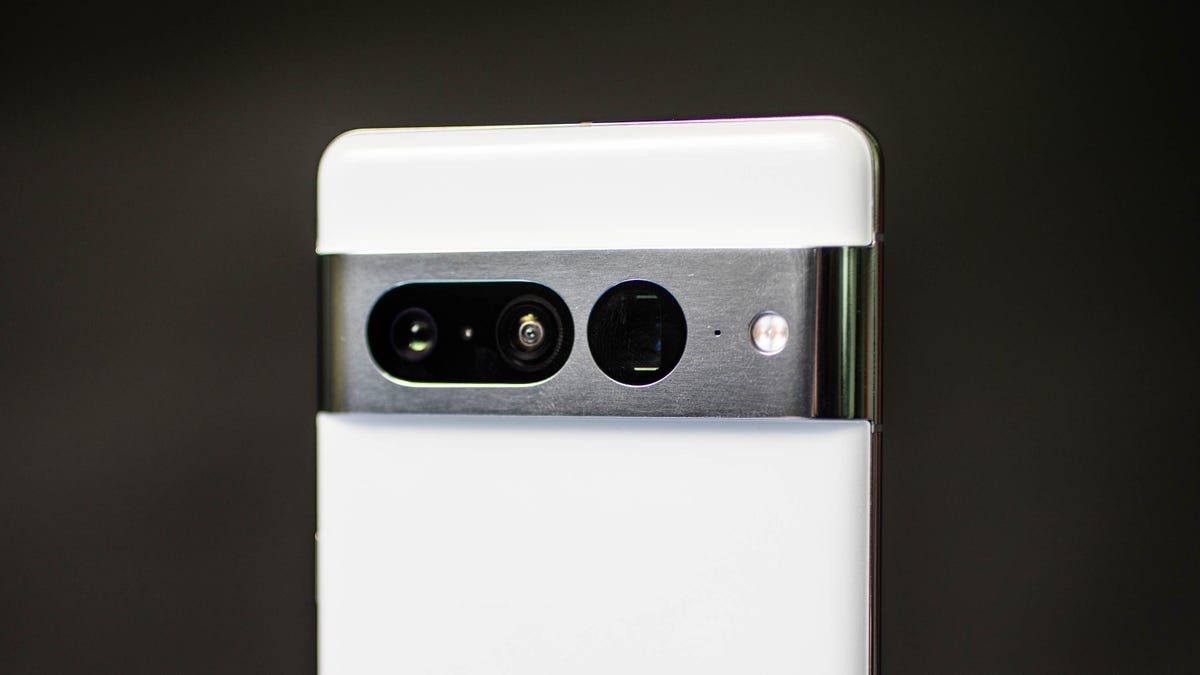

Google typically releases new flagship Pixel phones in the fall, and we’re expecting the company to follow that same pattern in 2023. We won’t know what’s in store for Google’s Pixel 8 and 8 Pro until it announces those devices.
However, Google’s updates have been very camera-centric in recent years, with the Pixel 7 lineup gaining improved zoom and the Pixel 7 Pro receiving a new macro photography mode. With the Pixel 6 and 6 Pro, which were the first Pixels to run on Google’s Tensor chips, we saw new features like Magic Eraser, Face Unblur and Real Tone. With that in mind, it wouldn’t be surprising to see Google push the camera even further on the Pixel 8 and 8 Pro, although we won’t know exactly what that looks like just yet. Both phones will also likely have a new Tensor processor, too.
Leaks have been scarce so far, but there have been a few reports claiming to provide details about Google’s next pair of Pixels. WinFuture reports the new phones will run on Android 14, which is expected to be the next major version of Android, and will have 12GB of RAM. Well-known gadget leaker Steve Hemmerstoffer also partnered with blogs MySmartPrice and SmartPrix to publish what are said to be renderings of the Pixel 8 and Pixel 8 Pro.
Android 14
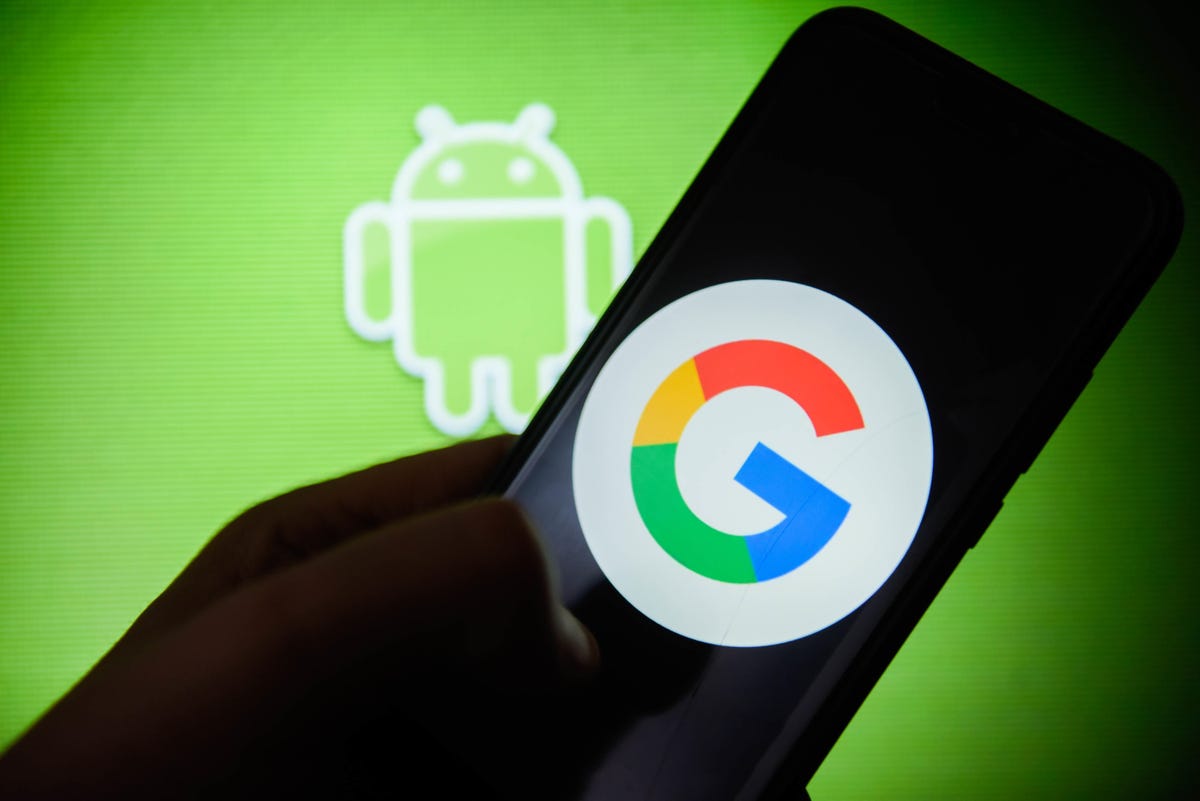

Android 14 is currently available in a preview mode for developers, with the final consumer-ready version expected to arrive in the fall. Google releases new Android features and Pixel-specific features throughout the year, but its annual version upgrades usually provide sweeping platform-wide improvements.
Android 13, for example, introduced more color options for Google’s Material You interface, end-to-end encryption for RCS group chats in Messages and more privacy protections, such as the option to grant apps access to a limited selection of photos instead of your whole library.
Based on what we know about Android 14 so far, it seems like Google will continue building on these themes by making improvements related to power efficiency, privacy and accessibility. We’ll likely find out more at Google’s I/O developer conference in May.
Pixel Tablet
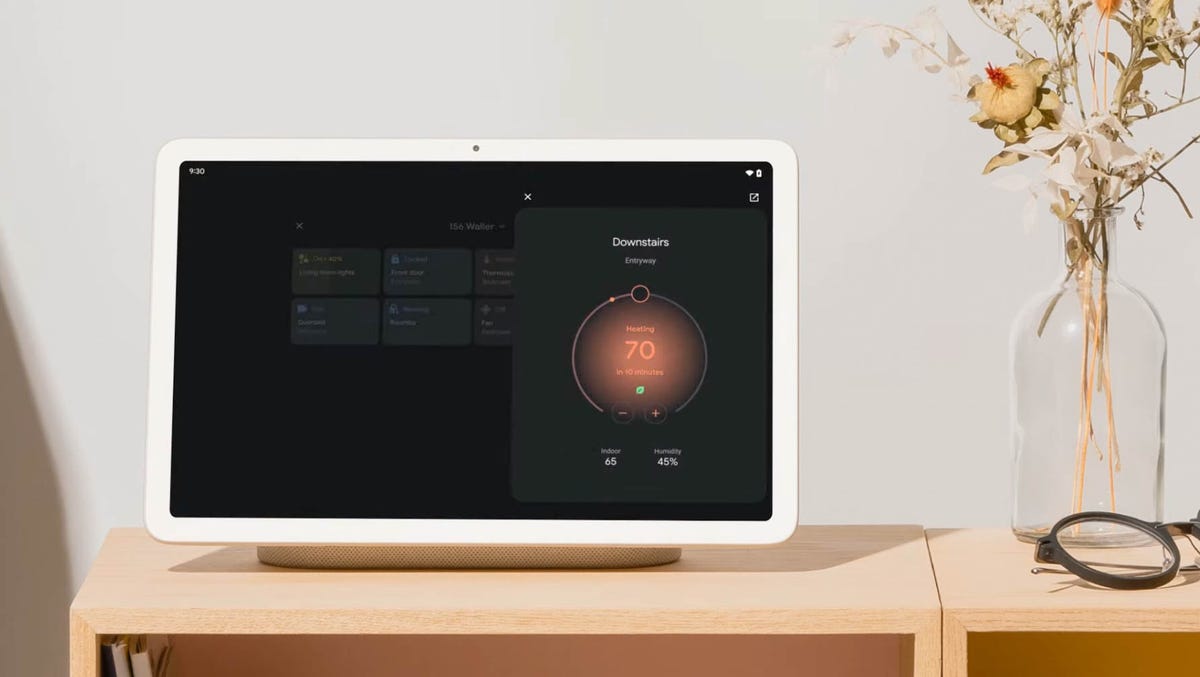

Google is taking a fresh approach to tablets with its upcoming Pixel Tablet, which will have a speaker charging dock that turns it into a Nest Hub when docked.
The company hasn’t revealed much about its upcoming tablet, but it did provide some details during its last Pixel event in October. Other than its speaker dock, we also learned that the tablet will have a nano-ceramic coating inspired by porcelain and will run on the Tensor G2 processor found in the Pixel 7 and 7 Pro.
Google said it plans to launch the tablet in 2023, although it didn’t provide specifics. We’re expecting to learn more at Google I/O or in the fall, when the company typically holds its Pixel product launch event.
More AI in Google Search and elsewhere
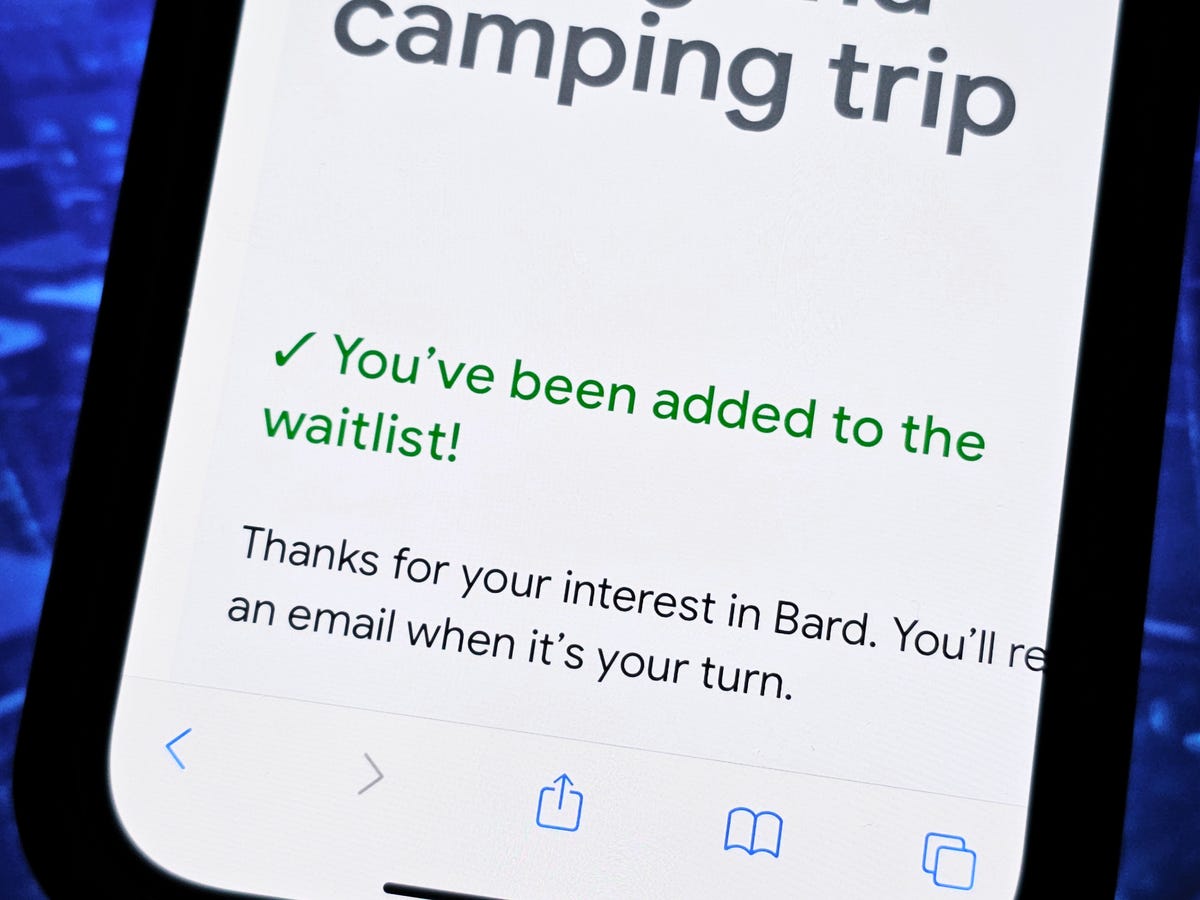

Joining the Bard waitlist only takes a few taps/clicks.
Nelson Aguilar/CNETFollowing the success of ChatGPT, generative AI has been everywhere in 2023 — and that includes in Google’s products. The company already introduced its AI-powered search chatbot Bard and announced new AI features for Gmail and Google Docs for generating drafts and rewriting emails.
But we’re expecting AI to be a dominant trend at Google I/O conference this year, especially as it seeks to keep pace with Microsoft and other rivals. Google reportedly issued a code red in December after ChatGPT debuted, according to The New York Times, so it wouldn’t be surprising to see Google use its conference as an opportunity to assert its authority in AI.
AI has been a prominent theme at Google I/O before. Last year, for example, Google discussed improvements to automation, like auto translation and transcription for video, as well as updates to Search that make it better at handling questions that combine text and images. With all the attention Microsoft’s Bing has garnered thanks to its incorporation of AI, Google will likely make AI and Search a centerpiece of its I/O presentation.
Pixel Watch 2


Google hasn’t discussed plans for future Pixel Watches, nor have there been many leaks or rumors about what’s next for Google’s smartwatch. But since Google’s Pixel phones follow a yearly cadence — as do the Pixel Watch’s biggest competitors like the Apple Watch and Samsung Galaxy Watch — it wouldn’t be surprising to see the Pixel Watch follow suit.
Based on Google’s current direction for the Pixel Watch, we can probably expect to see the same round design on its sequel. The latest version of Wear OS, which we’re expecting to hear more about at Google I/O, will also likely make an appearance. I’m also hoping to see longer battery life and a few extra health and fitness-tracking features, such as auto-workout detection.
Technologies
You Can Watch an Exclusive Avatar: Fire and Ash Scene on TikTok Right Now
Disney and TikTok partner on an immersive content hub for James Cameron’s latest movie about the alien Na’vi.
If you’re not quite ready to head to the theater to watch Avatar: Fire and Ash, an exclusive scene preview might sell you on the visual spectacle. As part of a new collaboration with the social media giant, Disney is posting snippets of its new movie to its TikTok account.
This scene isn’t part of any trailer and won’t be posted to other social media accounts, making TikTok the only place you can view it — unless you buy a movie ticket. A first look at the new movie’s scenes isn’t the only Avatar-related bonus on the social media platform right now, either. TikTok has partnered with the house of mouse to bring an entire «immersive content hub» to the app.
A special section of TikTok includes quizzes and educational videos that explore the alien world of Pandora shown off in the movies. On TikTok, you can take a personality quiz to find out what Na’vi clan you most closely align with and unlock a special profile picture border to use on your account.
Science and fiction blend together with a series of videos from real doctors who explain the basis for some of Avatar’s world-building. If you want to learn about exoplanets or how realistic the anatomy of the movie’s alien animals is, these videos will feed your brain while still providing entertainment value.
Perhaps the most enticing part of Disney’s latest social media collaboration is the opportunity for fans to win prizes and trips. TikTok creators who make edits with the #TikTokAvatarContest hashtag are entered into a competition to win Avatar merchandise. The biggest winners will be able to take a trip to visual effects studio Wētā Workshop in New Zealand or visit Avatar director James Cameron’s Lightstorm Entertainment Studio in Los Angeles.
Avatar: Fire and Ash is the third installment in director Cameron’s cinematic passion project. While the first Avatar movie was released in 2009, Cameron didn’t release another entry in the franchise until 2022. In total, there is a five-movie arc planned for the indigo alien Na’vi on the moon of Pandora.
The Avatar movies are known for pushing the boundaries of CGI visual effects in cinema. They are also historically big winners at the box office: the original Avatar is the highest-grossing film of all time, earning $2.9 billion across its theatrical releases. Its sequel, Avatar: The Way of Water, is the third-highest-grossing film of all time, trailing Avengers: Endgame. You can stream those movies on Disney Plus.
It remains to be seen whether Avatar: Fire and Ash will financially live up to its predecessors. The film currently has mixed reviews from critics on Rotten Tomatoes.
Technologies
Brain-Inspired Algorithms Could Dramatically Cut AI Energy Use
A new study dives into a major redesign for AI architecture.

One major issue facing artificial intelligence is the interaction between a computer’s memory and its processing capabilities. When an algorithm is in operation, data flows rapidly between these two components. However, AI models rely on a vast amount of data, which creates a bottleneck.
A new study, published on Monday in the journal Frontiers in Science by Purdue University and the Georgia Institute of Technology, suggests a novel approach to building computer architecture for AI models using brain-inspired algorithms. The researchers say that creating algorithms in this manner could reduce the energy costs associated with AI models.
«Language processing models have grown 5,000-fold in size over the last four years,» Kaushik Roy, a Purdue University computer engineering professor and the study’s lead author, said in a statement. «This alarmingly rapid expansion makes it crucial that AI is as efficient as possible. That means fundamentally rethinking how computers are designed.»
Don’t miss any of our unbiased tech content and lab-based reviews. Add CNET as a preferred Google source. Don’t miss any of our unbiased tech content and lab-based reviews. Add CNET as a preferred Google source.
Most computers today are modeled on an idea from 1945 called the von Neumann architecture, which separates processing and memory. This is where the slowdown occurs. As more people around the world utilize data-hungry AI models, the distinction between a computer’s processing and memory capacity could become a more significant issue.
Researchers at IBM called out this problem in a post earlier this year. The issue computer engineers are running up against is called the ‘memory wall.’
Breaking the memory wall
The memory wall refers to the disparity between memory and processing capabilities. Essentially, computer memory is struggling to keep up with processing speeds. This isn’t a new issue. A pair of researchers from the University of Virginia coined the term back in the 1990s.
But now that AI is prevalent, the memory wall issue is sucking up time and energy in the underlying computers that make AI models work. The paper’s researchers argue that we could try a new computer architecture that integrates memory and processing.
Inspired by how our brains function, the AI algorithms referred to in the paper are known as spiking neural networks. A common criticism of these algorithms in the past is that they can be slow and inaccurate. However, some computer scientists argue that these algorithms have shown significant improvement over the last few years.
The researchers suggest that AI models should utilize a concept related to SNNs, known as compute-in-memory. This concept is still relatively new in the field of AI.
«CIM offers a promising solution to the memory wall problem by integrating computing capabilities directly into the memory system,» the authors write in the paper’s abstract.
Medical devices, transportation, and drones are a few areas where researchers believe improvements could be made if computer processing and memory were integrated into a single system.
«AI is one of the most transformative technologies of the 21st century. However, to move it out of data centers and into the real world, we need to dramatically reduce its energy use,» Tanvi Sharma, co-author and researcher at Purdue University, said in a statement.
«With less data transfer and more efficient processing, AI can fit into small, affordable devices with batteries that last longer,» Sharma said.
Technologies
Today’s NYT Connections: Sports Edition Hints and Answers for Dec. 17, #450
Here are hints and the answers for the NYT Connections: Sports Edition puzzle for Dec. 17, No. 450.
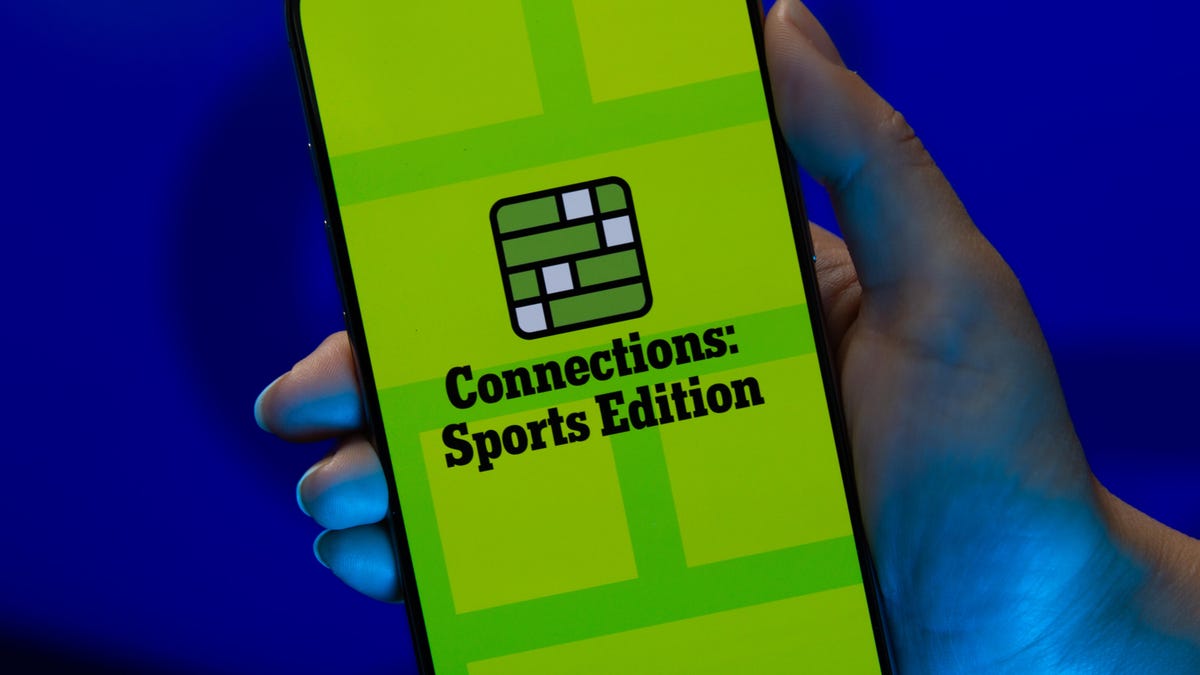
Looking for the most recent regular Connections answers? Click here for today’s Connections hints, as well as our daily answers and hints for The New York Times Mini Crossword, Wordle and Strands puzzles.
Today’s Connections: Sports Edition is pretty challenging. How well do you know French soccer? If you’re struggling with today’s puzzle but still want to solve it, read on for hints and the answers.
Connections: Sports Edition is published by The Athletic, the subscription-based sports journalism site owned by The Times. It doesn’t appear in the NYT Games app, but it does in The Athletic’s own app. Or you can play it for free online.
Read more: NYT Connections: Sports Edition Puzzle Comes Out of Beta
Hints for today’s Connections: Sports Edition groups
Here are four hints for the groupings in today’s Connections: Sports Edition puzzle, ranked from the easiest yellow group to the tough (and sometimes bizarre) purple group.
Yellow group hint: Put it on your noggin.
Green group hint: Goes before a division of the year.
Blue group hint: French football.
Purple group hint: Think Louisville Slugger.
Answers for today’s Connections: Sports Edition groups
Yellow group: Headgear.
Green group: Prefixes to -season.
Blue group: Ligue 1 teams.
Purple group: Batting ____.
Read more: Wordle Cheat Sheet: Here Are the Most Popular Letters Used in English Words
What are today’s Connections: Sports Edition answers?
The yellow words in today’s Connections
The theme is headgear. The four answers are cap, hat, mask and visor.
The green words in today’s Connections
The theme is prefixes to -season. The four answers are mid, off, post and pre.
The blue words in today’s Connections
The theme is Ligue 1 teams. The four answers are Lens, Marseille, Nice and PSG.
The purple words in today’s Connections
The theme is batting ____. The four answers are average, gloves, practice and stance.
Don’t miss any of our unbiased tech content and lab-based reviews. Add CNET as a preferred Google source.
-

 Technologies3 года ago
Technologies3 года agoTech Companies Need to Be Held Accountable for Security, Experts Say
-

 Technologies3 года ago
Technologies3 года agoBest Handheld Game Console in 2023
-

 Technologies3 года ago
Technologies3 года agoTighten Up Your VR Game With the Best Head Straps for Quest 2
-

 Technologies4 года ago
Technologies4 года agoBlack Friday 2021: The best deals on TVs, headphones, kitchenware, and more
-

 Technologies4 года ago
Technologies4 года agoVerum, Wickr and Threema: next generation secured messengers
-

 Technologies4 года ago
Technologies4 года agoGoogle to require vaccinations as Silicon Valley rethinks return-to-office policies
-

 Technologies4 года ago
Technologies4 года agoOlivia Harlan Dekker for Verum Messenger
-

 Technologies4 года ago
Technologies4 года agoiPhone 13 event: How to watch Apple’s big announcement tomorrow
